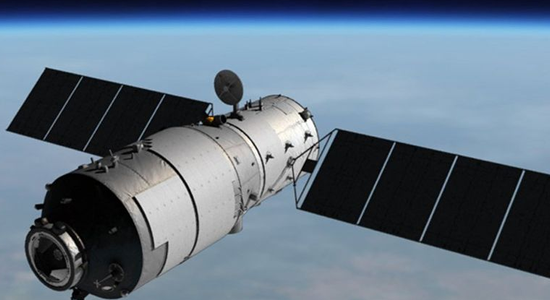After much fanfare, the rogue Chinese space station Tiangong-1 finally plunged through Earth’s atmosphere somewhere over the southern Pacific Ocean at 8:16 p.m. Eastern time on Sunday.
According to the Joint Force Space Component Command in a news release posted on Twitter, Tiangong-1 which means “Heavenly Palace” burst into flames and tiny pieces as it made its long-anticipated descent.
It was an anticlimactic finale, as space agencies had warned of the falling space debris about the size of a school bus since China lost contact with it in September 2016.
The element of suspense escalated in recent weeks, as international space officials maintained that there was no way to know exactly where Tiangong-1 might hit, even as it hurtled closer and closer to Earth.
The attention paid to Tiangong-1, China’s first space station in orbit, was largely owing to its size of about 19,000 pounds and the nature of its uncontrolled descent.
Heavenly Palace did not hurt anybody while it hurled towards the ocean, burning up largely in the atmosphere over the Pacific northwest of Tahiti. That’s where other space agencies try to land debris from space.
Once Earth’s gravity got a good hold of the Heavenly Palace, it started accelerating the spacecraft faster and faster up until it reached the thicker air layers of the atmosphere. That’s when the fires started, likely destroying most of Tiangong-1.
If any debris survived the perilous reentry, it’s in the ocean, and it still belongs to China. If anyone gets hit by debris, it’s also China’s problem.
China, meanwhile, has a new Heavenly Palace up there, Tiangong-2, which was launched in 2016. A third, even bigger space station is planned for 2023.
However, in the grand scheme of space debris, Tiangong-1, won’t even measure close to the Top 10 of largest objects to reenter the atmosphere. Nor did it light up the sky for all to see, relegating it to a footnote in the world of space junk spectacles.
The reentry of space debris into Earth’s atmosphere is a phenomenon that occurs dozens or even hundreds of times each year, according to data from Aerospace Corp.’s Center for Orbital and Reentry Debris Studies.
There were just under 200 such events in 2017. Yet because most of the re-entries play out as Tiangong-1 and may involve much smaller pieces, only a select few events have caused a stir over the last few decades.



















